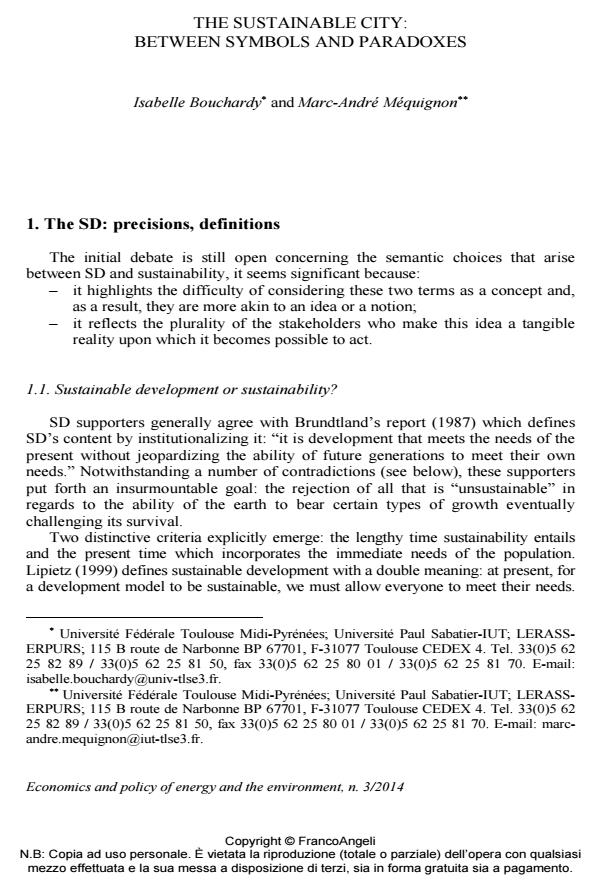The sustainable city: between symbols and paradoxes
Journal title ECONOMICS AND POLICY OF ENERGY AND THE ENVIRONMENT
Author/s Isabelle Bouchardy, marc-André Mequignon
Publishing Year 2015 Issue 2014/3
Language English Pages 14 P. 101-114 File size 608 KB
DOI 10.3280/EFE2014-003006
DOI is like a bar code for intellectual property: to have more infomation
click here
Below, you can see the article first page
If you want to buy this article in PDF format, you can do it, following the instructions to buy download credits

FrancoAngeli is member of Publishers International Linking Association, Inc (PILA), a not-for-profit association which run the CrossRef service enabling links to and from online scholarly content.
The ideas presented here focus on the concept of a sustainable city delimited by its habitats and revolves around main three contradictions: the heterogeneity of temporal deadlines, the inability to exceed the dimensions related to the technical specifications of buildings, an increase of global urbanization which repudiate all ecological considerations: irreversible impact that penalizes sustainable development are analyzed in regard to the paradigms of mediation and intermediation. The comparison of these different themes, from the most abstract to the extremely practical or concrete and even experimental concepts create problems a priori for some unknown reason and react poorly to analysis. The scope will be defined before attempting to apply it to the city. Then, a diachronic approach to sustainable development (SD) in relation to the city will shed light on the contradictions, but also on any aporias. Finally, part three shall conclude that the city or the urban area, as a space and building producer, will have to accept the consequences of these contradictions while generating solutions opposite to those that should be respected to meet SD criteria and in keeping the three paradoxes in perspective. In direct reference to SD, we shall try to show the consequences of the application of these various principles to a city reclassified as a "sustainable" city.
Keywords: Sustainability, city, habitat, territory, socio-ecology
Jel codes: Q17, R18, P16
Isabelle Bouchardy, marc-André Mequignon, The sustainable city: between symbols and paradoxes in "ECONOMICS AND POLICY OF ENERGY AND THE ENVIRONMENT" 3/2014, pp 101-114, DOI: 10.3280/EFE2014-003006